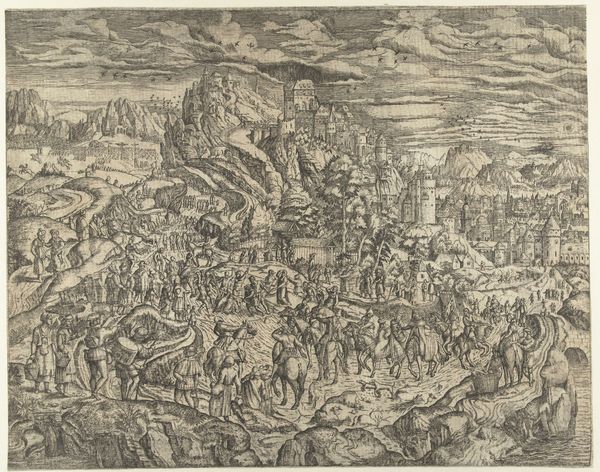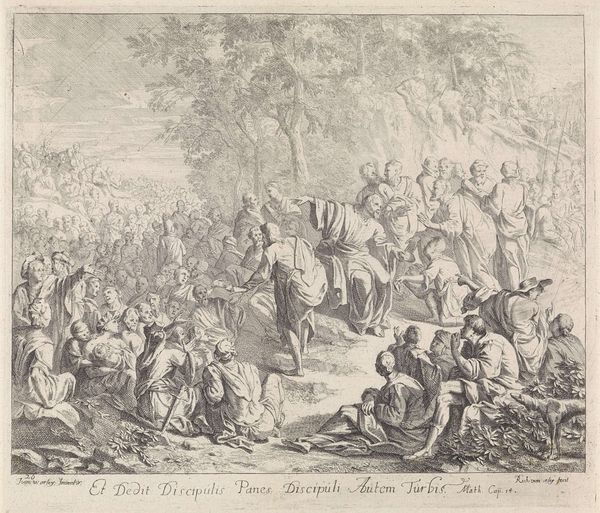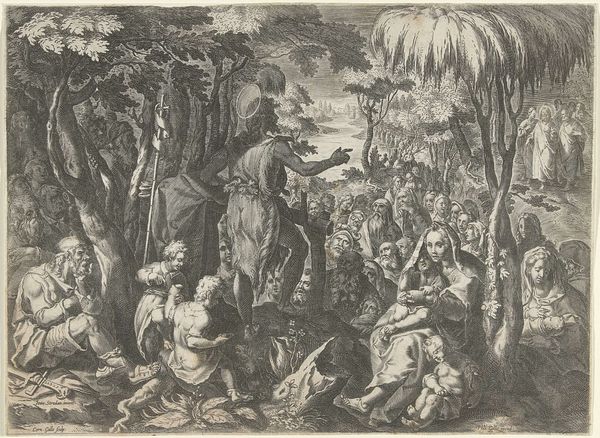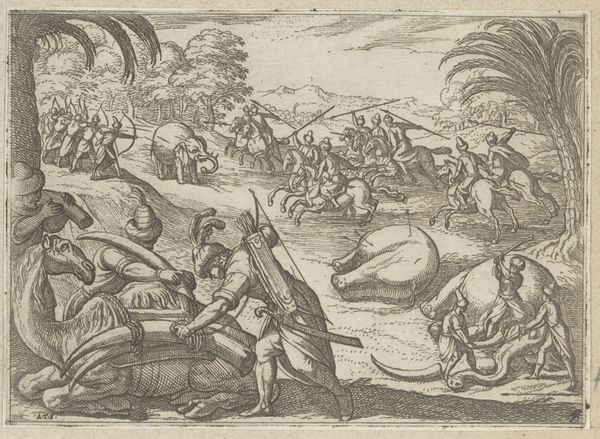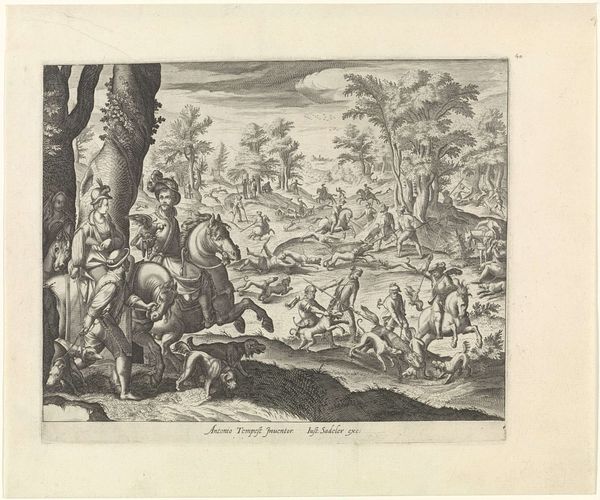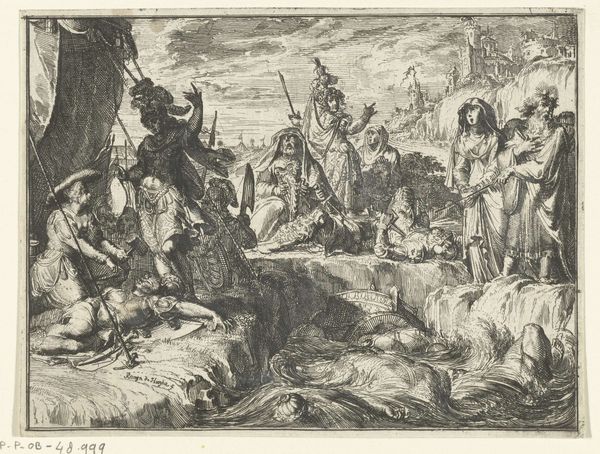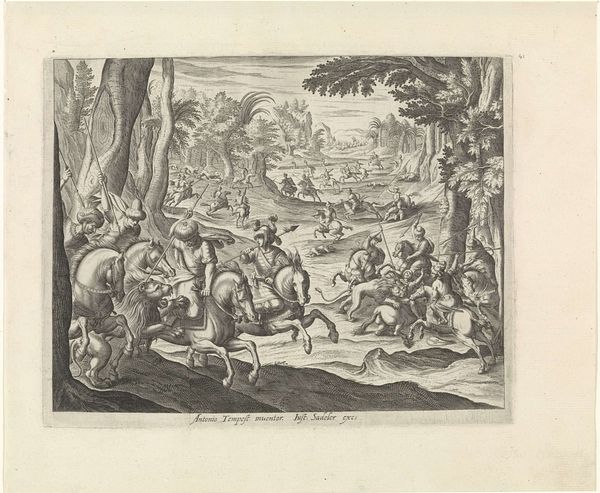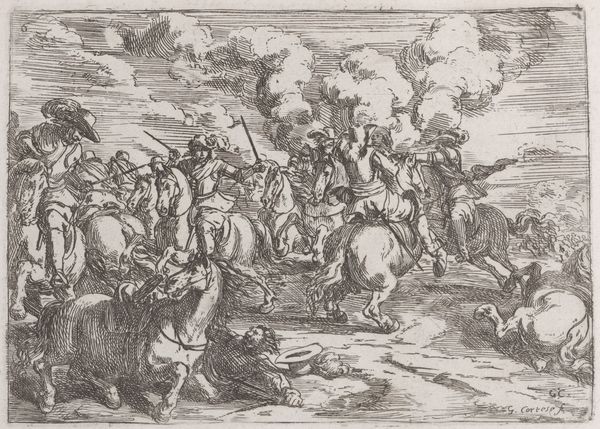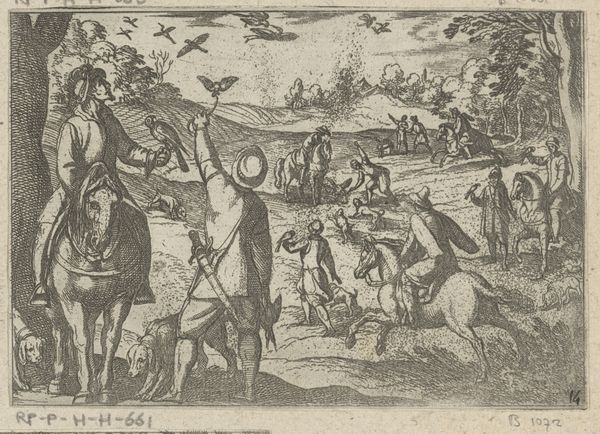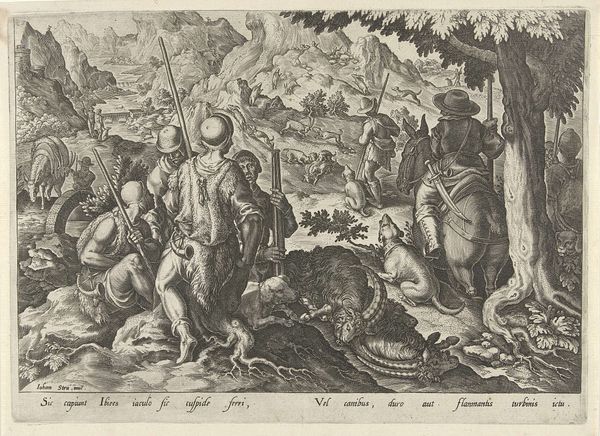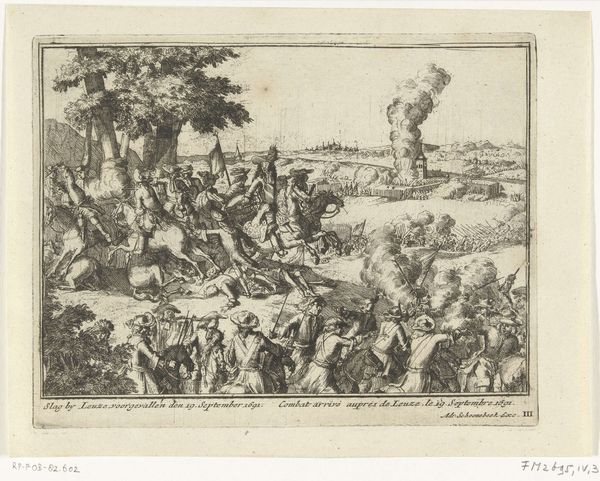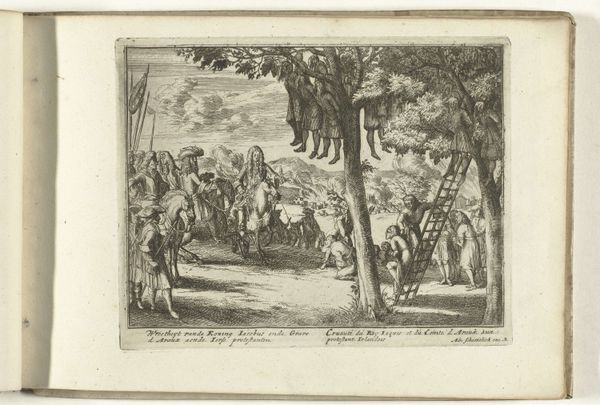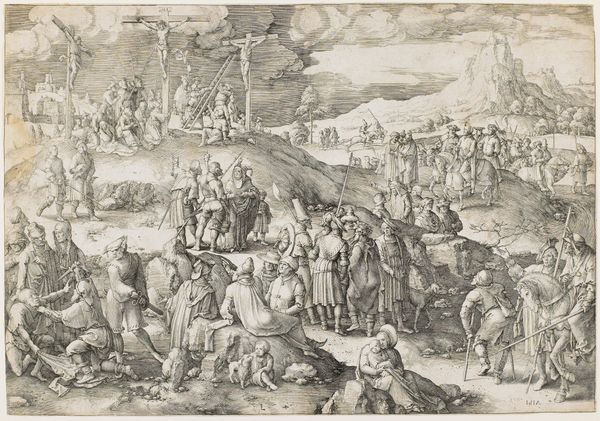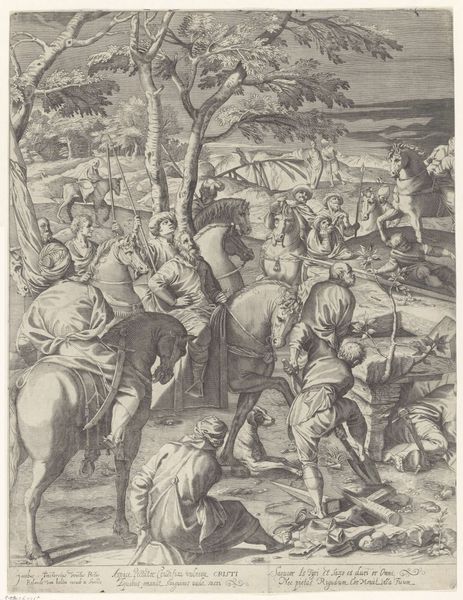
drawing, print, ink, engraving
#
drawing
#
ink drawing
#
narrative-art
# print
#
landscape
#
figuration
#
ink
#
history-painting
#
italian-renaissance
#
engraving
Dimensions: height 374 mm, width 446 mm
Copyright: Rijks Museum: Open Domain
Giovanni Battista Fontana etched this "Calvarieberg," or Calvary, in the late 16th century, capturing the crucifixion scene. Dominating the vista are three crosses, symbols of profound religious significance: the central cross bears Christ, flanked by the two thieves. This reflects not just the culmination of the Gospels, but a moment of transition, a convergence of divine tragedy and human redemption. The image of the cross, or crux, recurs across cultures and ages. Long before Christianity, the cross appeared as a symbol of cosmic order, a point of intersection between the divine and earthly realms. We find echoes of this in ancient Egyptian ankhs, symbols of life, and in various solar crosses from pre-Christian Europe. Consider too, the psychological weight, how the vertical and horizontal can signify the human condition, the struggle between aspiration and earthly constraint. Across time, the cross has become a powerful emblem, laden with collective memory, and it continues to resonate, triggering intense emotional and psychological responses. Its enduring power lies in its ability to condense complex emotions into a simple, universally understood symbol, forever evolving.
Comments
No comments
Be the first to comment and join the conversation on the ultimate creative platform.
